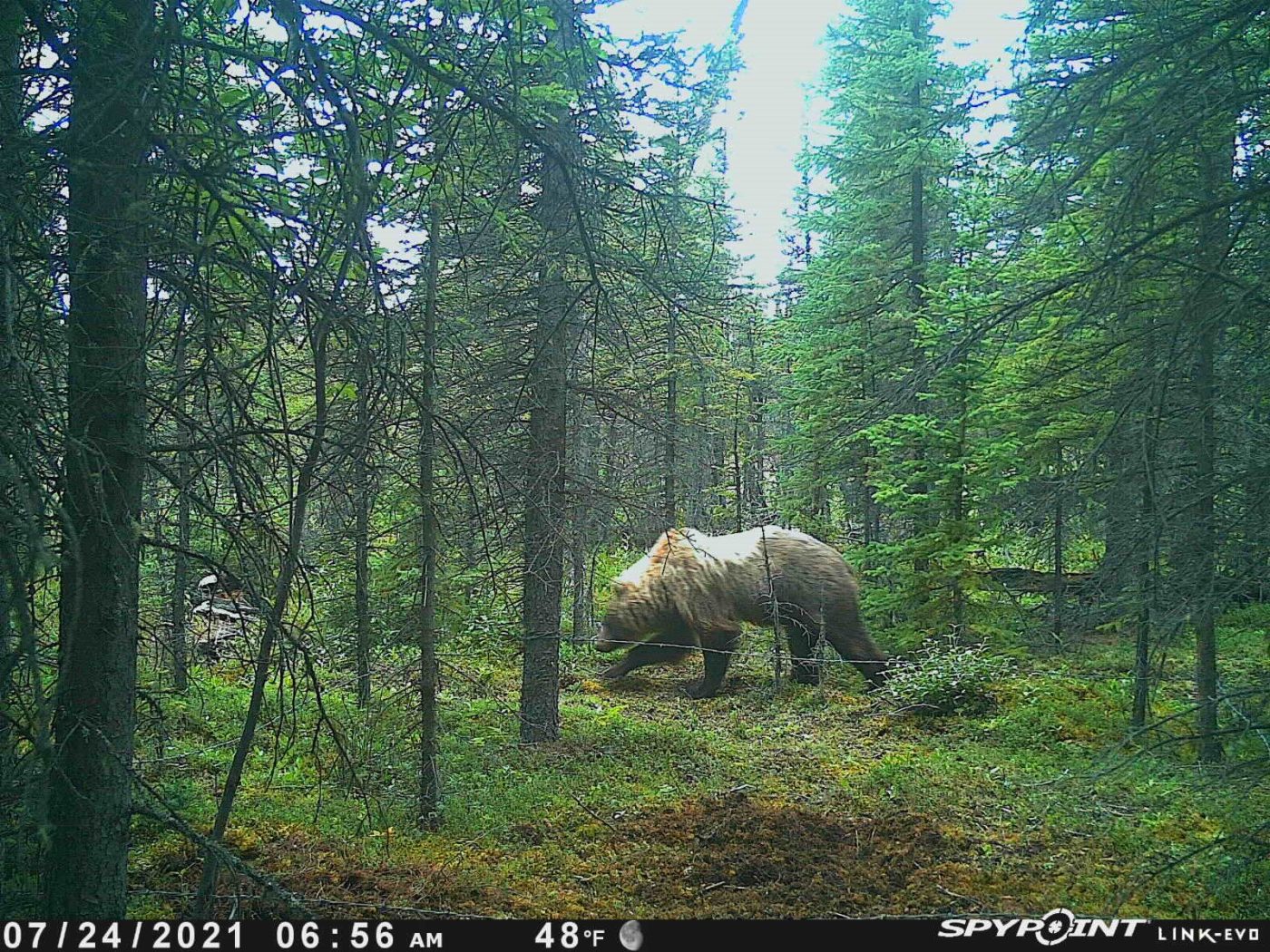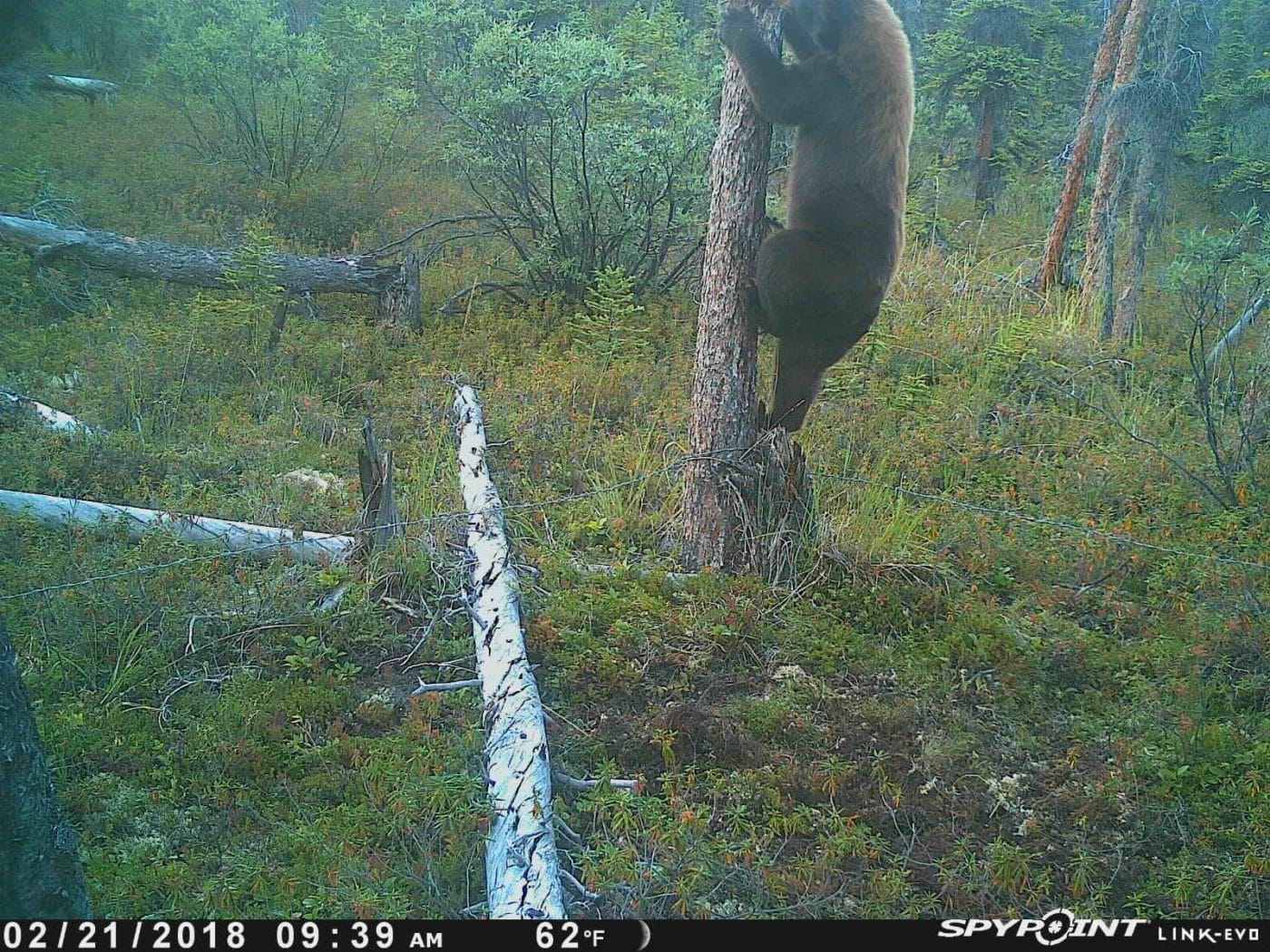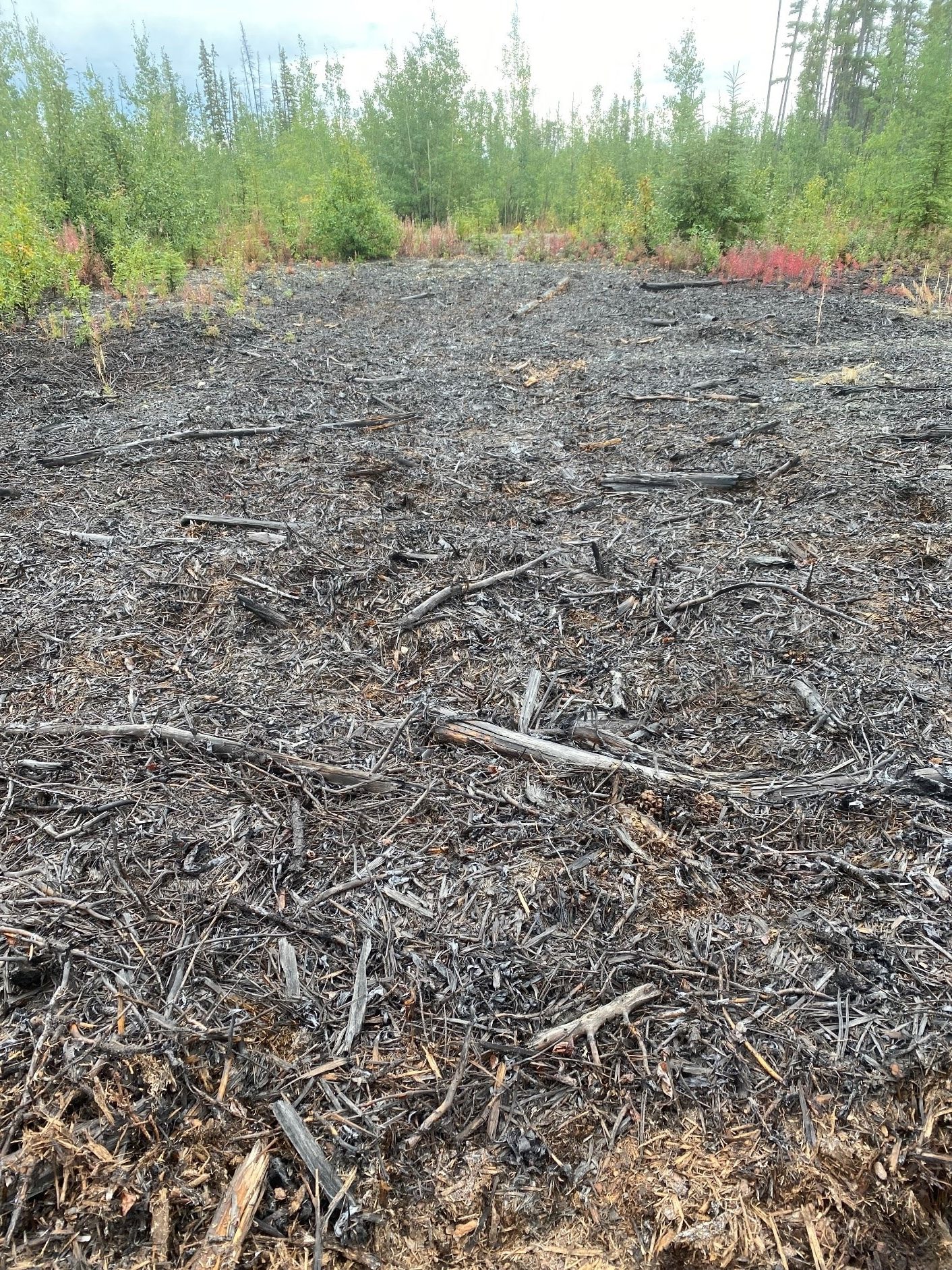
Carnivore Stewardship
In 2021, Land Department staff conducted the Carnivore Stewardship Program across Chistochina, Gakona and Kluti-Kaah lands. We again partnered with the Ahtna Intertribal Resource Commission (AITRC) and the Alaska Department of Fish and Game to develop the protocol. A total of 13 hair snares were placed from June through early August, from which Land Department staff collected a total of 50 hair samples. In addition to the 28 hair snares, 13 cameras were placed at hair snare locations this season. There were only three pictures of brown bears, but we were able to capture 63 pictures of black bears. Based on the pictures we do have, we can obtain a relative estimate of three different brown bears and 12 different black bears.

Results of DNA analysis for the 2021 season are currently pending but will tell us exactly how many bears visited the hair snares. This information will be used to formulate a rough population density across the Ahtna region. Results of DNA analysis from 2018 through 2021 and future bear studies will help determine more accurate bear density figures and population trends. The 2022 Carnivore Stewardship Program will again collaborate with AITRC and the State of Alaska. Ahtna staff will continue to conduct work on Ahtna land while Alaska Department of Fish and Game (ADFG) and AITRC will conduct similar research on lands not owned by Ahtna to provide an overall estimate of bears in Game Management Unit (GMU) 13.
Log Landing Rehabilitation

In the summer of 2020, Ahtna Land Department staff cleared wood chips from two, 2 ½ – acre log landings in Kluti-Kaah and Tazlina and planted willow stakes the following spring to promote the growth of moose forage. Approximately 150 willow trees were planted at each site. In addition to the log landing rehabilitation sites, leftover willows were planted at a site near the Edgerton Highway to create a willow nursery to maintain stocks for future willow planting. Results of the first year suggested an 80% survival rate following the emergence of the planted trees. As temperatures in the region increased and precipitation levels decreased, survival rates dropped to 25%.
During the fall of 2021, Land Department staff are working towards cleaning up an additional five log landings for willow planting in the spring of 2022. The remaining log landings will be cleared over the summer and fall of 2022 for spring planting in 2023.
Moose Track Counts
In the winter of 2019-2020, moose track counts were conducted in the areas of Tazlina, Gulkana, Gakona and Kluti-Kaah and were used to help estimate winter moose densities on Ahtna land. The track counts occurred on 62 miles of trail between the four village areas. A total of 43 sets of moose tracks were recorded during the effort, and results suggest there are approximately 0.75 moose per square mile in the overall survey area. The Tazlina portion of the survey area appeared to be the most productive with one moose per square mile, while just under one moose per mile was found in the Gakona area. No moose were witnessed during the moose track counts.
During the winter of 2020-2021, the second year of track counts were conducted in the same areas as the previous winter. Trail length was increased from 62 miles to 73 miles to broaden the scope of the study area. We also increased track counts to two sets per village area to capture early and late winter data to compare movement and help improve seasonal estimates. We saw 49 sets of moose tracks and witnessed 7 total moose on the trails (3 bulls, 2 cows, 1 cow/calf pair). Preliminary results show an increased density of 1.2 moose per square mile and moose activity has increased in all areas except for Kluti-Kaah. The Land Department will continue conducting track counts over the winter of 2021-2022 to help determine population trends and areas in need of habitat improvement.
